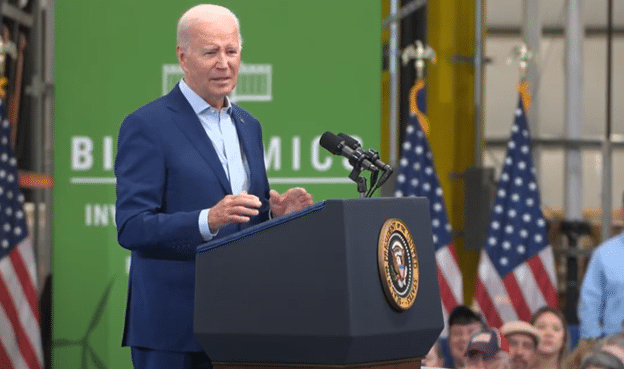
Don’t look now, but inflation over the past twelve months ticked upward from 2.4 percent in September to 2.6 percent in October following the Federal Reserve’s decision to begin cutting interest rates on Sept. 18 to 4.75 percent to 5 percent. Did the Fed start cutting too quickly?
Maybe, but the other side of that was the October employment report was really not good, showing tepid job creation by employers as the unemployment level ticked upward by 150,000, which is usually what happens during inflation cooling cycles after the economy has overheated and demand is exhausted.
So, right now, the U.S. economy is sending mixed signals, although sometimes you can see a final spike in inflation right before recessions like in 2008, 1991, 1981, 1980 and so forth.
The nagging inflation, which played a large role in defeating the incumbent Vice President Kamala Harris in the election, saw gasoline and oil ticking slightly downward in October — gas was down 0.9 percent and fuel oil was down 4.6 percent — but those might be getting a boost in November as the Ukraine war continues escalating in the twilight weeks of the Biden-Harris administration.
Electricity was up another 1.2 percent in October, and is still up 4.5 percent the past year.
Natural gas was up 0.3 percent, above trend for the past year of 2 percent.
Food was up another 0.4 percent in October.
Items less food and energy were up another 0.3 percent, and are up 3.3 percent the last twelve months.
That was led by a 0.4 percent increase in transportation services, still up 8.2 percent the past year.
Shelter was up another 0.4 percent as well, and is up 4.9 percent the past year.
And medical care services were up 0.4 percent, up 3.8 percent the past year.
So, what to do about it? Right now, the Federal Reserve appears to be postponing plans for further rate cuts, with Fed Chairman Jerome Powell stating Nov. 14, “The economy is not sending any signals that we need to be in a hurry to lower rates.”
Foreseeing interest rates elevated, which should soak up some more of the nearly $7 trillion printed, borrowed and spent into existence during and after Covid — the M2 money supply had decreased from $21.7 trillion in April 2022 to $20.7 trillion by Nov. 2023, but is up again $21.2 trillion as of Sept. 2024 — the other places to look will be fiscal policy and economic production.
Namely, Congress can act to slow down spending increases, freezing or cutting the $1.9 trillion discretionary budget in the appropriations process, which can put less pressure on treasuries markets.
That will certainly be a focus of the Republican Congress and President-elect Donald Trump — and his new Department of Government Efficiency headed by Elon Musk and Vivek Ramaswamy that is set to make recommendations to the White House Office of Management and Budget.
And whatever is holding back agriculture and energy production: regulations, bad mixes of incentives and subsidies for other items and deliberate production slowdowns by green do-gooders, need to be circumvented in some way. Whatever it is, increasing supplies will decrease prices.
Those are the options: Reduce the money supply and increase the availability of goods and services via fiscal policy and regulatory incentives — those are things the government can definitely influence.
There could also be an incidental recession, wherein unemployment increases, which can also have the impact of reducing demand and therefore inflation, which might actually speed the process up. On that count, even as Powell still aims for the elusive so-called “soft” landing, from Trump’s perspective, perhaps the sooner the better.
Historically, all of the largest bouts of inflation were ended by slowdowns and recessions.
Jimmy Carter had one in 1980 and it ended his presidency, and then Ronald Reagan had one in 1982 and by the time he was standing for another term, it was over and the recovery was fully underway, the high inflation did not return and he was reelected in a landslide. The lesson is to get it over with and take your medicine if necessary, and otherwise to create the best possible chance of success by creating less new money and boosting production.
Robert Romano is the Vice President of Public Policy at Americans for Limited Government Foundation.





